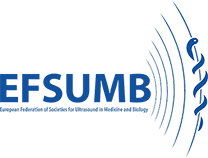
CEUS in Thyroid Assessment
Part of the EFSUMB CEUS Webinar Series, 'CEUS in Thyroid Assessment', took place on Tuesday 28 October 2025 at 11.00 CEST and was hosted by Sintesi on behalf of EFSUMB.
SPEAKER

Vito Cantisani
The Application of CEUS in the Diagnosis of Thyroid Diseases
SPEAKER

TInghui Yin
CEUS-guided thyroid Interventional
SPEAKER


